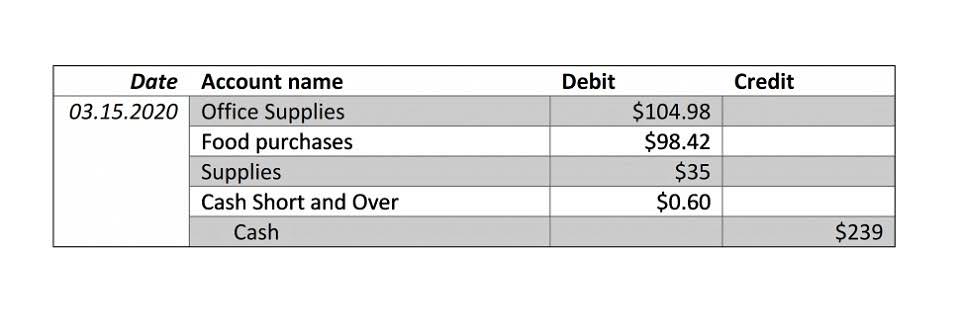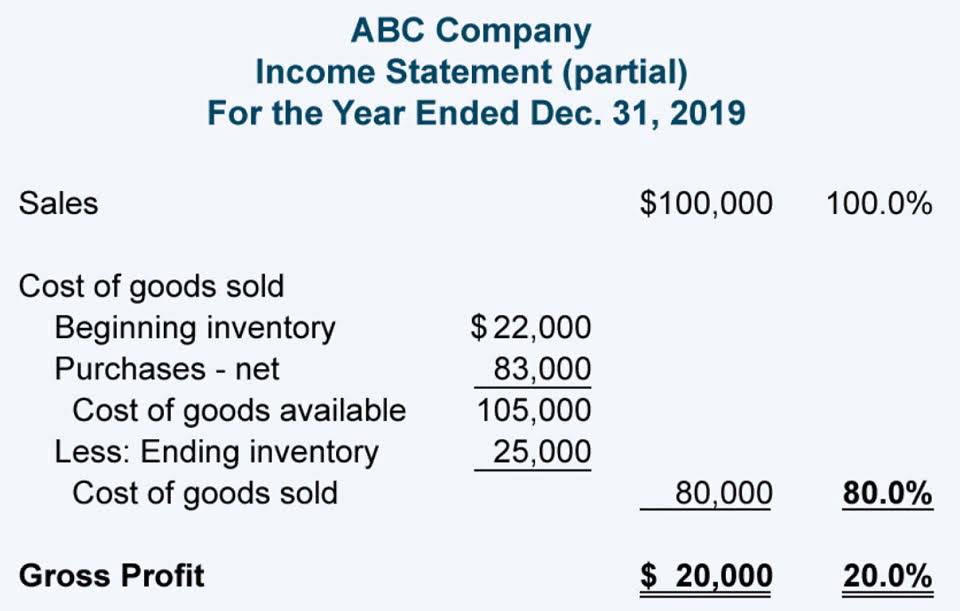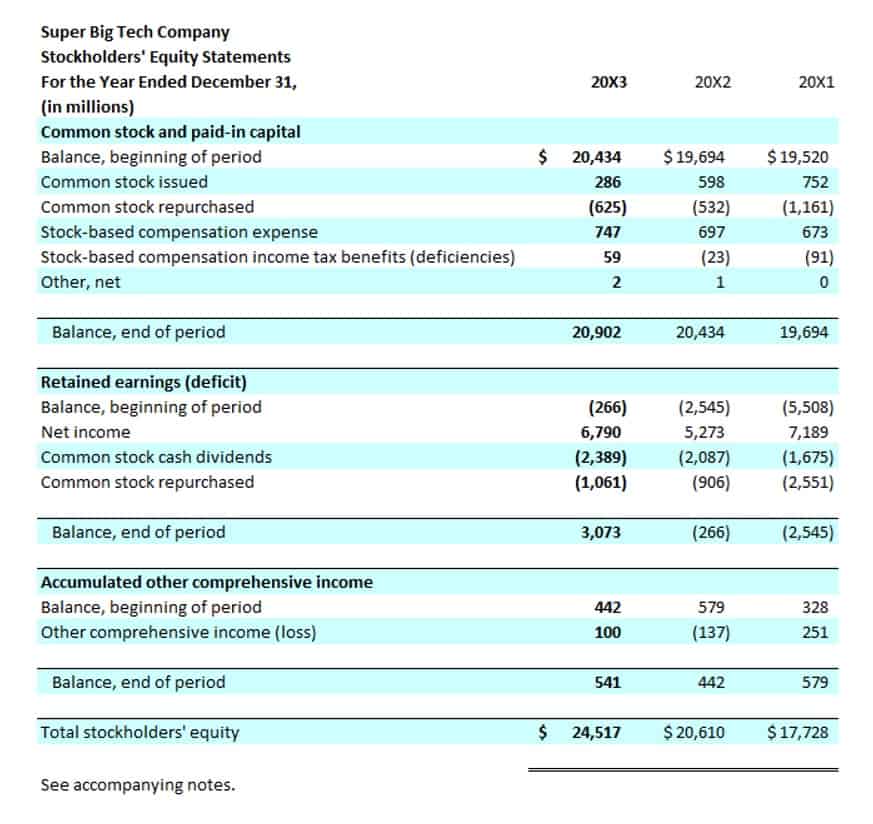Understanding General Ledger vs General Journal
This column is used to record the amounts of the accounts being debited. There may be multiple debit or credit entries, but the sum taxation of rsus explained of the debits must be equal to the sum of the credits. For example, multiple expenses (debits) may be paid with one payment (a credit). As you can see in the general journal template above, the key information that should be included at the top is the name of the entity and the period that the journal is recording.
- But the record that kind of financial transaction in their own journal.
- Consequently the credit side of this entry needs to be entered in the account of supplier ABC in the accounts payable ledger.
- However, they may not necessarily include all of the same kinds of information.
- Take note that inventory returns that were originally purchased in cash cannot be entered into this journal.
- For example, it is also known as the book of original entry, the primary book, the book of primary entry, and the book of first entry.
- This journal is where all credit returns of merchandise or inventory are recorded.
This is done in order to further organize the kind of transactions into the specific journal type where it fits. Some organizations keep specialized journals, such as purchase journals or sales journals, that only record specific types of transactions. To complete an entry in a general journal, one would write a journal entry as usual. One represents the income side and one represents the expenditures side. A general ledger is a collection of accounts and other items that can be used to track specific kinds and sources of income and expenditures.
A brief description known as narration is also written in this column below the credit part of the entry. It is common to leave some space at the left-hand margin before writing the credit part of the journal entry. The process of recording transactions in the journal is referred to as journalizing. Although it may seem quite simple, this record-keeping tool can be a powerful asset for your business. This way, it will be easier to analyze the effects of the transactions than if they were recorded in one journal.
Either way, journals are still important in order to keep a record of all sorts of transactions. A financial professional will offer guidance based on the information provided and offer a no-obligation call to better understand your situation. Someone on our team will connect you with a financial professional in our network holding the correct designation and expertise. average inventory defined The description column is used to enter the names of the accounts involved in the transaction.
Ask a Financial Professional Any Question
Our goal is to deliver the most understandable and comprehensive explanations of financial topics using simple writing complemented by helpful graphics and animation videos. The two headings are, a) account headings column b) date of entries column. It is worth noting that the receivables and payables accounts must be posted twice. Throughout time, the general journal has been referred to in many ways.
In the journal, two aspects of every transaction are recorded, following the double-entry system of accounting. The recording of journal entries needs to follow the debit and credit roles. For example, expenses are increasing in debit, and revenues are increasing in credit. A ledger, on the other hand, is where the results of the transactions are kept permanently. During preparation, all financial transactions will have to be recorded first in the journal before they are translated into the ledger. Each transaction a company makes throughout the year is recorded in its accounting system.
What is the main advantage of using a general journal?
It is written once per page (i.e., it does not have to be repeated for every entry on the page). Just keep in mind these things and always remember to use journals properly so you don’t have to face any problems while doing your books. Sources of cash could also include, but are not limited to, debtors, income, or loans received. This is where one would record items such as customer payments and bank deposits.
Do you own a business?
Take note that inventory returns that were originally purchased in cash cannot be entered into this journal. My Accounting Course is a world-class educational resource developed by experts to simplify accounting, finance, & investment analysis topics, so students and professionals can learn and propel their careers. Our accounting nominal journal template will help a business to document and post journal entries in a consistent, standard format setting out the required information listed above. If you do end up making an error, you can easily find it by adding both sides of your journal entry together. If they do not equal the same number, you know that something has gone wrong.
The debit part of the entry is written first and the credit part is written below the debit part. Examples include a sales or purchase return, a compound entry involving several accounts, and most adjusting entries. The general journal is where all information not included in an individual transaction will be recorded. This includes things like payments for rent or interest on loans. Sales to customers who pay in cash should not be recorded here, but instead entered in the Cash Receipts Journal. The cash disbursements journal is where all payments to creditors using cash are noted down.
What Is a T Account?
The first step is transaction analysis, which provides the information needed to journalize a transaction. The process of recording in the journal is called journalizing. After analyzing a business transaction, it is recorded in a book known as the journal (or general journal). When a transaction is logged in the journal, it becomes a journal entry. The journal, also known as the general journal, is involved in the first phase of accounting because all transactions are recorded in it, originally in chronological order.
This is so the exact amounts on one side of a journal entry can be determined by subtracting the other side. Our team of reviewers are established professionals with decades of experience in areas of personal finance and hold many advanced degrees and certifications. 11 Financial is a registered investment adviser located in Lufkin, Texas. 11 Financial may only transact business in those states in which it is registered, or qualifies for an exemption or exclusion from registration requirements. 11 Financial’s website is limited to the dissemination of general information pertaining to its advisory services, together with access to additional investment-related information, publications, and links.
This is also where we list information about credits and debits so as to form a complete accounting system for recording transactions in double-entry bookkeeping. Transactions that first appear in the journals are subsequently posted in general ledger accounts. Then, account balances are calculated and transferred from the general ledger to a trial balance before appearing on a company’s official financial statements. They can be used to show balance sheets and cash flow statements.











